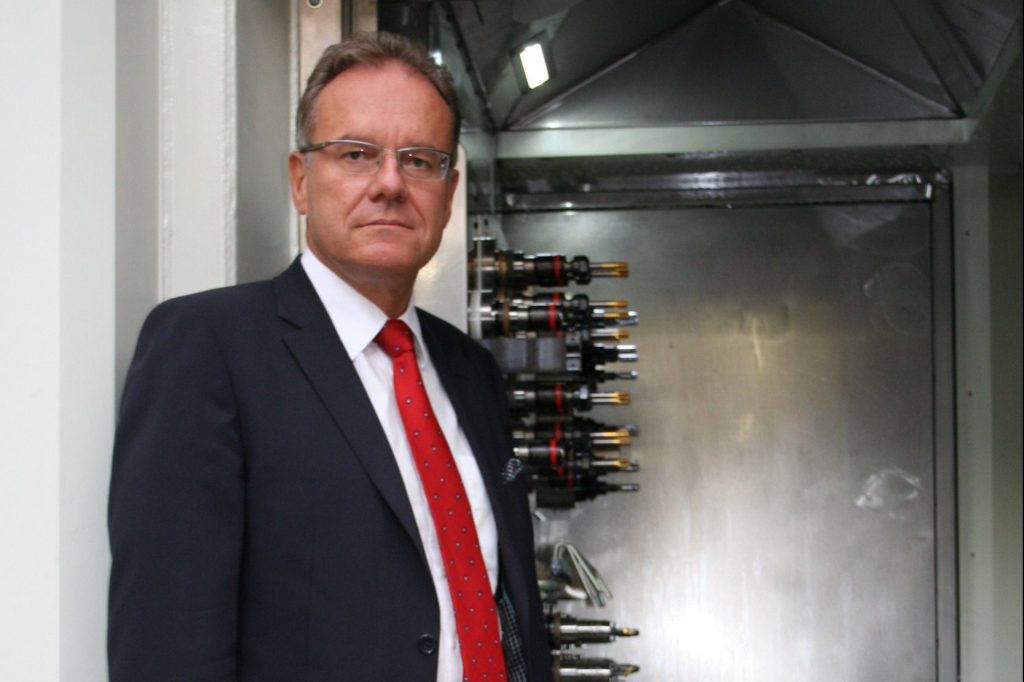The European Union is keeping additive manufacturing among its priorities in industrial goods trade negotiations with the U.S. CECIMO, the association representing the interests of machine tool and manufacturing technologies, has spoken out to endorse the EU’s handling of this subject, and remains hopeful that the discussions will help facilitate growth of the additive manufacturing sector.
One of the outcomes CECIMO hopes for from the EU-U.S talks is the divergence of European and U.S. standards definitions, a system that currently serves as a barrier to the industry’s progression. “Addressing barriers to EU-U.S. trade such as double certification issues would boost the growth of AM solutions in both economies,” explains Stewart Lane, Chairman of the CECIMO AM Committee.
The talks have been ongoing since the June 2018 and, in the most recent update, the Commission seems to be closing in on a mutually beneficial deal with the U.S. “Both Europe and the U.S. are notable actors in the global AM market,” adds CECIMO President Dr. Roland Feichtl.
“CECIMO will continue to cooperate with trade negotiators and convey the views of Europe-based AM exporters on non-tariff barriers encountered in EU-U.S. trade.”

Removing barriers to additive manufacturing’s progress
The EU and U.S. began discussing trade relations in June 2018, incidentally around the time the UK Parliament approved its Withdrawal Act to exit union with the continent. Jean-Claude Juncker, President of the European Commission, visited the White House on June 25, 2018. A joint statement between Juncker and President Donald Trump confirmed that, “We want to further strengthen this trade relationship to the benefit of all American and European citizens.”
In particular, they added, “[…] we agreed today, first of all, to work together toward zero tariffs, zero non-tariff barriers, and zero subsidies on non-auto industrial goods.” Topics also discussed were trade barriers associates with “services, chemicals, pharmaceuticals, medical products” and “soybeans.” In the most recent January 2019 update on these discussions, two potential agreements have been submitted by the Commission, pending agreement with the U.S. These are, as follows:
1. A trade agreement strictly focused on the removal of tariffs on industrial goods, excluding agricultural products;
2. A second agreement, on conformity assessment, that would help address the objective of removing non-tariff barriers, by making it easier for companies to prove their products meet technical requirements on both sides of the Atlantic.
Approval of these two agreements would be tremendously beneficial to both partners, as it would effectively create a singular standards track for companies in the EU and U.S., eradicating the need to reapply for certification when entering a new geographic market. For additive manufacturing in particular, this would alleviate the burden of resources currently applied to the pursuit of multiple, practically identical, certificates, allow companies to redirect efforts to further technological refinement and maturation. This could potentially be most beneficial to high regulation verticals such as aerospace, medicine and automotive.

America’s trade relationship with the rest of the world
Following Junker’s visit in 2018, the EU and U.S. formed a joint Executive Working Group to asses trade between the two entities. In the 2019 update, the European Commission reportedly highlighted additive manufacturing as a “specific technology” for consideration of “deeper transatlantic regulatory cooperation.” Lane says, “The fact AM has been singled out in the trade discussions right from the beginning is a sign of the importance of this technology for industrial trade today.”
Dr. Feichtl concludes, “Our aim is to ensure negotiations progress and deliver a final trade deal that improve access of European AM companies to the US market.”
While the U.S. is seeking to improve its relationship with the EU concerns did emerge last year about potential tariffs on goods traded with China. To assess the impact of this motion within the additive manufacturing industry, we spoke to a number of stakeholders to gain a better picture. Though some remain unaffected by the change, other OEMs deemed the charges “unnecessary” and feared they “will block technology transfer between regions.” In addition to trade with China, the U.S. proposed, then paused, a revision of its trade tariffs relating to emerging technologies, which would have had direct ramifications for 3D printing.
To stay up to date with all the latest legal and regulatory developments in 3D printing subscribe to the 3D Printing Industry newsletter, like us on Facebook and follow us on Twitter.
Feature image shows graphic from What is Additive Manufacturing? via cecimo.eu



